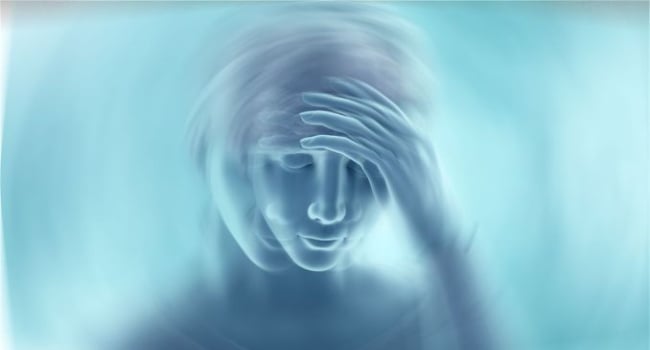Dizziness is one of the most common symptoms that patients experience. Along with headache and back pain, this is a common complaint in the office of a general practitioner or neurologist. What is this symptom and why does it appear?
What is dizziness?
Dizziness or vertigo is the sensation of an imaginary movement of space around oneself or oneself in space. Almost everyone has felt it at some point, for example, when getting out of bed abruptly. The number of complaints of vertigo increases with age: the older the person, the higher the chances of experiencing it.
Doctors divide dizziness into two types – vestibular and non-vestibular. These differ in their manifestations.
Vestibular dizziness necessarily has a direction of movement. For example, you abruptly sat up in bed and there was a feeling of whole room “floating” to the side.
And then there is non-vestibular dizziness, it has no clear direction. It is felt as instability, “floating sensation”, “lightness in the head”.
Different types of vertigo are characteristic of different diseases. Therefore, it is very important to describe your symptoms in detail if you see a doctor.
Causes of dizziness
Often dizziness occurs due to the pathology of the vestibular system, which is located in the inner ear and brain. It is responsible for balance, evaluates the position of the body in space. This system suffers for various reasons and often gives symptoms of vestibular dizziness. This happens with strokes, head injuries, but the most common cause is tiny crystals – otoliths that occur in the inner ear. By themselves, they are not dangerous, but they can irritate the receptors that are there. This can cause nausea, vomiting and dizziness.
Non-vestibular dizziness most often has nothing to do with the structures of the brain or inner ear. A common cause of this symptom is psychogenic factors such as anxiety disorder, depression. The sensation of vertigo can also be given by various diseases: damage to the nerves that are responsible for our limbs, impaired vision and even hearing.
Dizziness is diverse, even two different types of vertigo can occur in the same person in different situations. There are two most common diagnoses of dizziness that occur in the outpatient practice of a doctor, let’s talk about them in more detail.
Benign paroxysmal positional vertigo (BPPV)
This long name hides the most common cause of dizziness in the practice of an outpatient neurologist. This is the diagnosis associated with the appearance of otoliths in the inner ear.
These small crystals irritate the receptors that sense the acceleration and deceleration of our body in different planes. As a result, there are vivid symptoms: dizziness, nausea, vomiting, and nystagmus (twitching of the eyeballs). The intensity of these manifestations can frighten the patient and often serves as a reason to consult a doctor or even call an ambulance. It is also worth noting that dizziness does not appear immediately when moving, but after a couple of seconds when changing the position of the body or turning the head.
The intensity of symptoms is smoothed out by their benign nature and the possibility of therapy. These conditions are treated by a neurologist or vertigo specialist. There are several special techniques that the doctor will use to confirm the diagnosis and provide treatment. Their task will be to remove the otoliths from those parts of the inner ear where they irritate the receptors. The specialist will turn you from side to side, make you lie for several minutes in a certain position. This is necessary for a good result.
With the correct implementation of these tests, there is high chance that the dizziness will regress. To insure further effectiveness, doctors usually conduct special exercises called Brandt-Daroff. They should be performed daily so that the symptoms do not return. Pills for the treatment of BPPV are only prescribed if the effect of the methods performed by the doctor was not sufficient.
Persistent postural perceptual dizziness (PPPV)
The second frequent type of vertigo with a traditionally long name. But its essence is very simple – dizziness is associated with psychogenic factors and not damage to the structures of the inner ear or brain.
It is often manifested by a feeling of instability, being unable to walk, “lightness in the head.” Patients subjectively note that they are “swaying”, sometimes there is even a feeling of a slight unreality of what is happening around you. Often PPPV is accompanied by a fear of falling and even a fear of going out on your own.
If such a diagnosis is made, the treatment will depend not only on the doctor, but also on the patient. Because one of the first recommendations is balance training. Of course, ideally, the doctor will show you and tell you how to do it, but further exercises will need to be done by the person themselves and daily.
The treatment for PPPV includes psychotherapy and antidepressants, if needed. But without therapeutic exercises, which will train the patient’s balance, positive results cannot be achieved.
Dizziness is a symptom that should not be neglected. We have described only two of its variants, but the doctor will make a differential diagnosis and considering a huge number of diseases. Therefore, self-diagnosis and self-treatment is a bad option. If you are worried about dizziness of any nature, you need to consult a specialist. It could be a neurologist or a general practitioner.
The specificity of vertigo will be that the success of the treatment will largely depend on the patient. Unfortunately, there is no magic pill for dizziness. But if you follow the doctor’s recommendations and exercise, then there is a good chance that the dizziness will not return or become intense.


